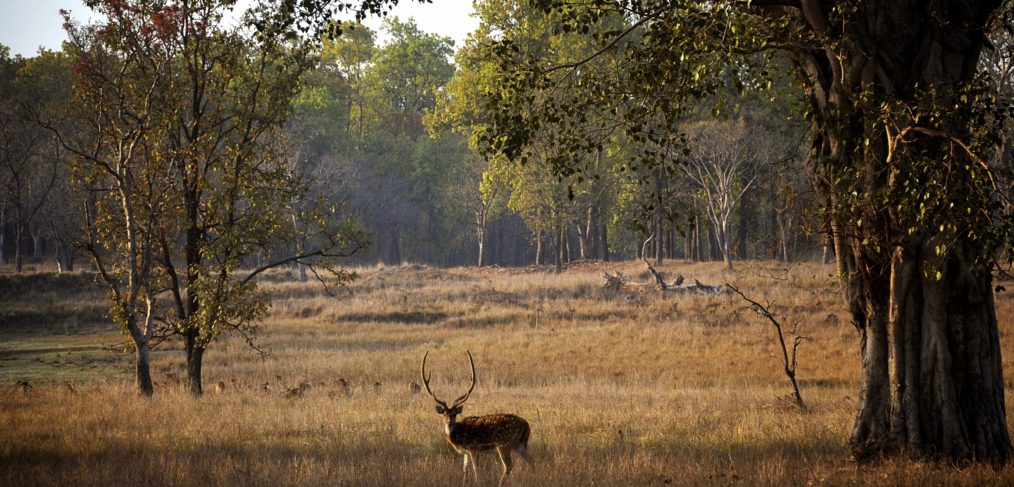
India Tourism Trends: Indian Wildlife Beyond the Tiger
Nature doesn’t touch the hearts of tourists who just want a photo of a tiger to show off. Yet, we need an emotional reaction to nature in order to thrive and be happy.
These were the thought-provoking words of Belinda Wright, award-winning wildlife photographer and conservationist from Kipling Camp in Madhya Pradesh, who presented one of the discovery sessions at the inaugural edition of Très RARE in Delhi recently. And, what she said really resonated with me.
I grew up in rural Australia, surrounded by nature and wildlife. To me, there’s nothing more soothing (except when a koala starts grunting loudly and horrifically in the vicinity of my bedroom window at night!). Although I’ve adjusted to life in the concrete jungle of Mumbai, I often crave to connect with the restorative energy of a natural jungle.
Some people, who have lived their whole lives in cities, don’t even know this energy exists. It’s a travesty that they’ll go to a national park, huge lenses in tow, and never feel it. Their emotional reaction to nature is missing. And, the insidious pressure to photograph a tiger and post it on social media, is perpetuating it.
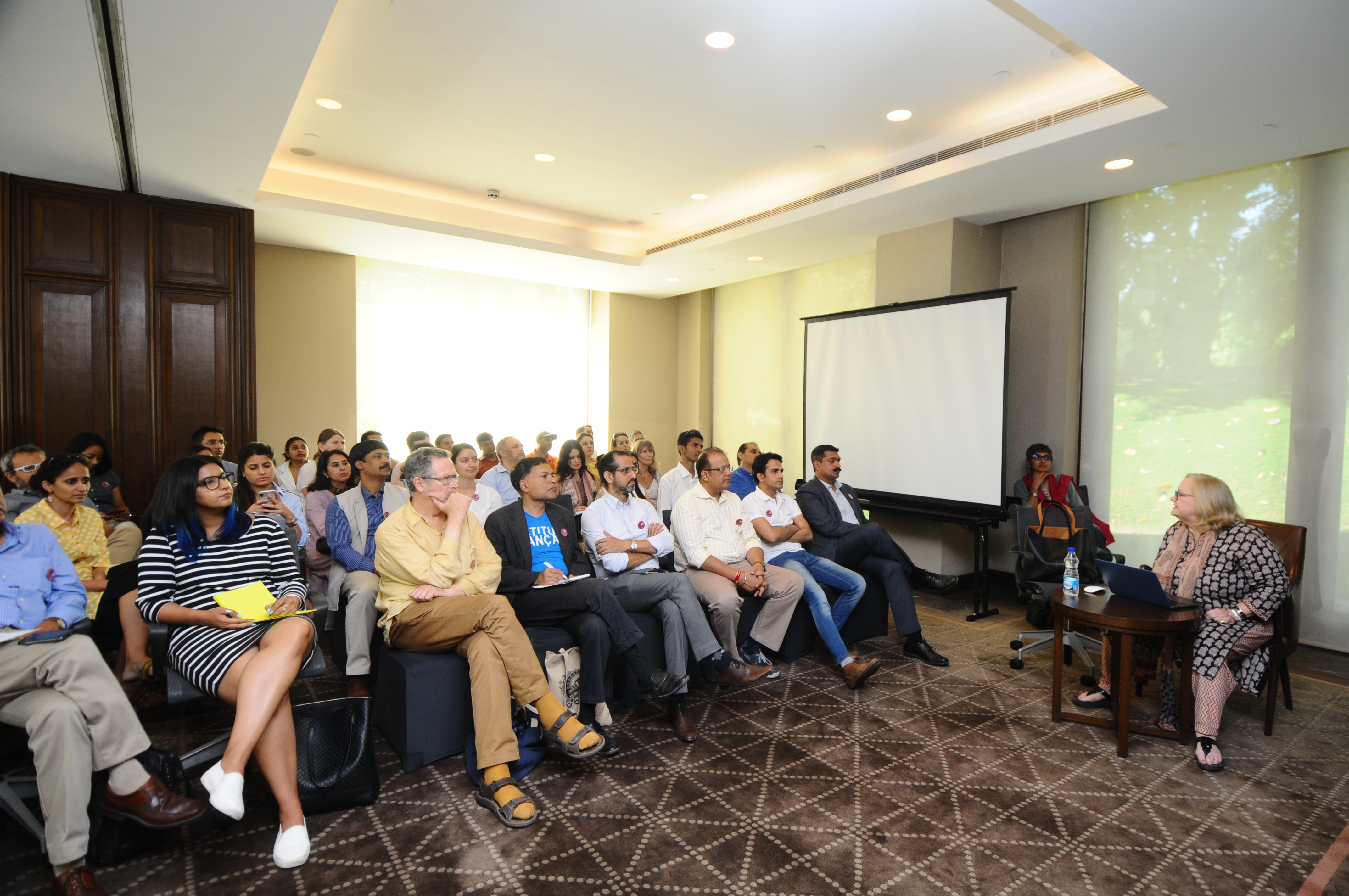
A significant part of the problem, as mentioned by Belinda in her talk, is how “tiger tours” are marketed by the travel industry. So much emphasis is placed on the tiger that tourists are conditioned to ignore the rest of the jungle and wildlife. If they don’t see a tiger, they’ll say they’ve seen nothing!
India is one of the most bio-diverse countries on earth. What’s more, India is historically culturally intertwined with wildlife. This sets it apart from anywhere else in the world. Conservation of forests and wildlife in India can be traced back all the way to the 3rd century BC, when Emperor Ashoka enacted protective laws. Hindu mythology is filled with references to the worship of animals and association of animals with various gods. Hindu texts have laid down rules for interaction between man and nature, as well. There are also communities in India, such as the Bishnois, who dedicate themselves to protecting the environment.
This cultural connection must be recognised and promoted to the foreign market. According to Belinda, tiger tours need to be re-branded as “cultural wildlife experiences” or “exotic India with a wildlife focus”. Tourists should come prepared to see more than tigers in India.
What’s On Offer Apart from Tiger Safaris?
When most people visit national parks in India, their whole trip centers around going on safari — and as many safaris as possible, to ensure they see that elusive tiger. They plan to fit other activities, if any, into whatever spare time they have. With two safaris a day, this isn’t much. They don’t consider it to be an issue though. After all, what else is there to do of interest? Quite a lot actually, it turns out!
More than 10 top boutique Indian jungle lodges and camps were showcased at Très RARE 2018. I was surprised (and thrilled) by the diverse and inspiring range of activities they offer — activities especially designed for guests to connect with nature and the destination. Some of the highlights are as follows:
- Jamtara Wilderness Camp, Pench National Park — the unlikely location of this property is really special. It’s in a very unspoiled area with no other properties in the vicinity! It really is the wilderness, and it’s incredible! There are 10 luxury tents but sleeping out on a “star bed” under the moonlight is unforgettable. The villagers are friendly and welcome visitors. Other activities include biking and bird watching.
- Jim’s Jungle Retreat, Corbett National Park — this property invites you to “seek the tiger and find the jungle”. It’s set on 15 acres, complete with water bodies, to explore. It’s a real jungle experience on its own! Guests can go on various curated walks including a fascinating termite walk, bird watching walk, night walk, python trail, and local heritage walk. Children can become acquainted with nature and learn to appreciate it on the Young Rangers Program. One of the original forest communities lives nearby and their way of life is worth discovering. The property also has a plant nursery and organic farm, and serves delicious local cuisine. Plus, there’s a plethora of pretty butterflies. The elevated “Jungle Lodge” accommodations have spectacular views of the surroundings.
- Sarai at Toria, Panna National Park — situated beside the Ken river only 20 minutes from Kharjuraho, this property really enables guests to experience the culture of the area. Forts (one is possibly the oldest in India and you won’t see any other foreigners there), temples, architecture, nature and village walks, rural cycle rides, cooking demonstrations, river boat safari, and riverside yoga are all possible. A boat ride along the river is an outstanding experience and a “highlight of India”. The property runs on solar electricity, and even has its own citronella oil (made by a local NGO) to keep away mosquitoes.
- Kipling Camp, Kanha National Park — resident elephant, Tara, makes this property stand out. It’s one of the few ethical places to interact with elephants in India. Tara has lived a pampered retired life there since 1988. Guests return frequently just to see her and bathe her in the river. The property supports the local tribal community, and guests can see tribal dances and take tribal art classes. Other options include visiting a tribal market, bird watching, nature walks, and cycling.
- Reni Pani Jungle Lodge, Satpura National Park — Satpura is one of the few national parks in India that doesn’t restrict tourist access to jeep safaris, and this property definitely makes the most of it! Long nature walks, canoe safaris, and boat safaris are all offered. The property also conducts a “Satpura Under Canvas” mobile camping and walking experience through the forest. Recently, they started Pop-Up Expeditions to handpicked destinations to look for rare species of wildlife.
- Svasara Jungle Lodge, Tadoba National Park — this modern eco-friendly property focuses on local Verhadi cuisine, natural orange-based spa treatments (it’s near Nagpur, India’s orange capital), and forest regeneration. Guests can also visit a pottery center, and go on nature walks.
- Samode Safari Lodge, Bandhavgarh National Park — part of the Samode Hotels portfolio, a luxury royal heritage hotel group from Rajasthan, this very exclusive property provides a holistic wildlife experience. A trip to Africa by its owners prompted its creation. Guests are encouraged to engage with the forest’s communities. The property’s architecture has local features and is decorated with Gond tribal art. Food is important, and dining takes place at exotic venues on the property’s 22 acres. There’s no fixed dining room! Cycling, cooking and village visits are other activities.
With so many marvelous options, the hard part isn’t finding things to do but rather choosing where to do them!
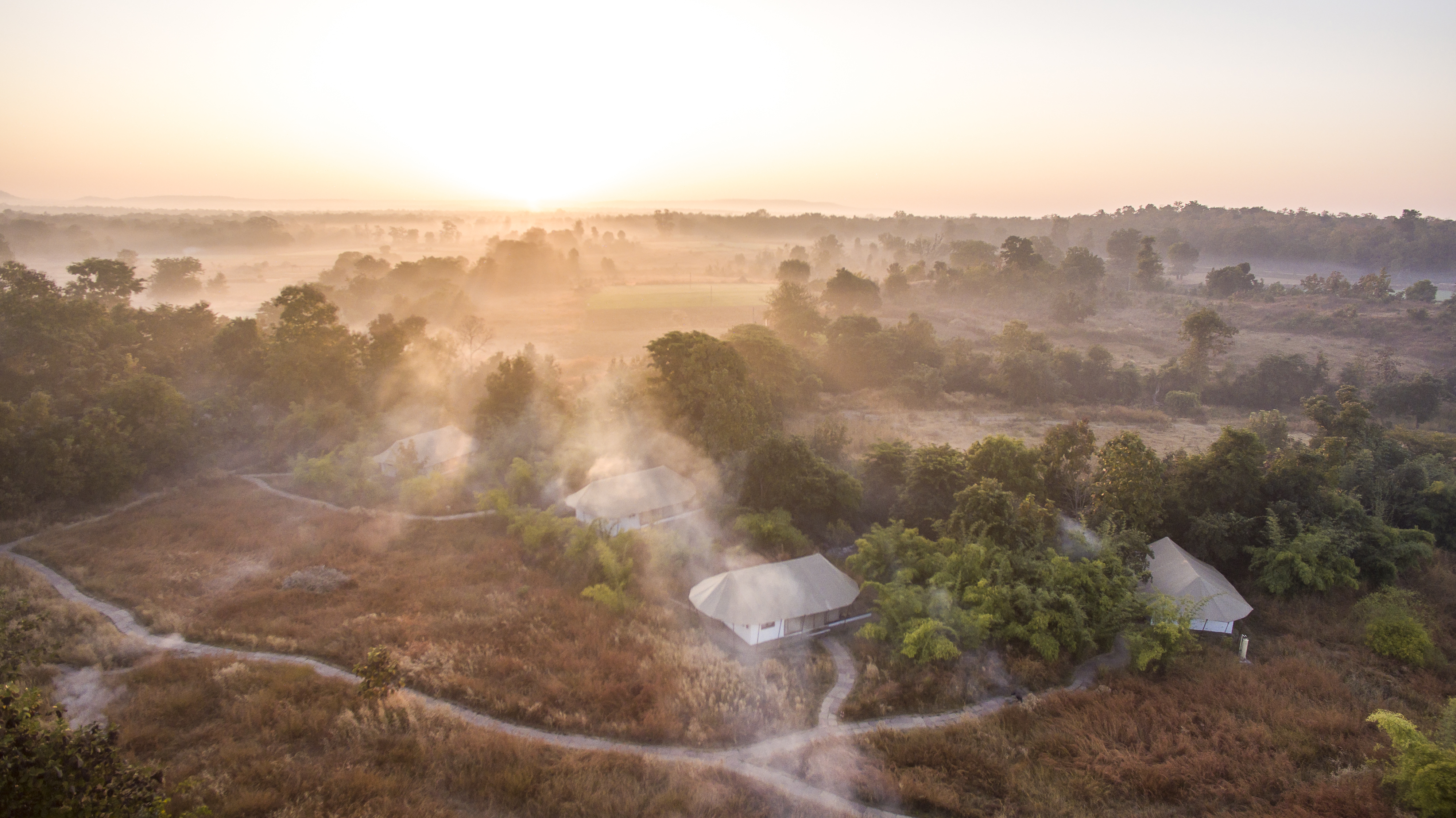
Jamtara Wilderness Camp, Pench.
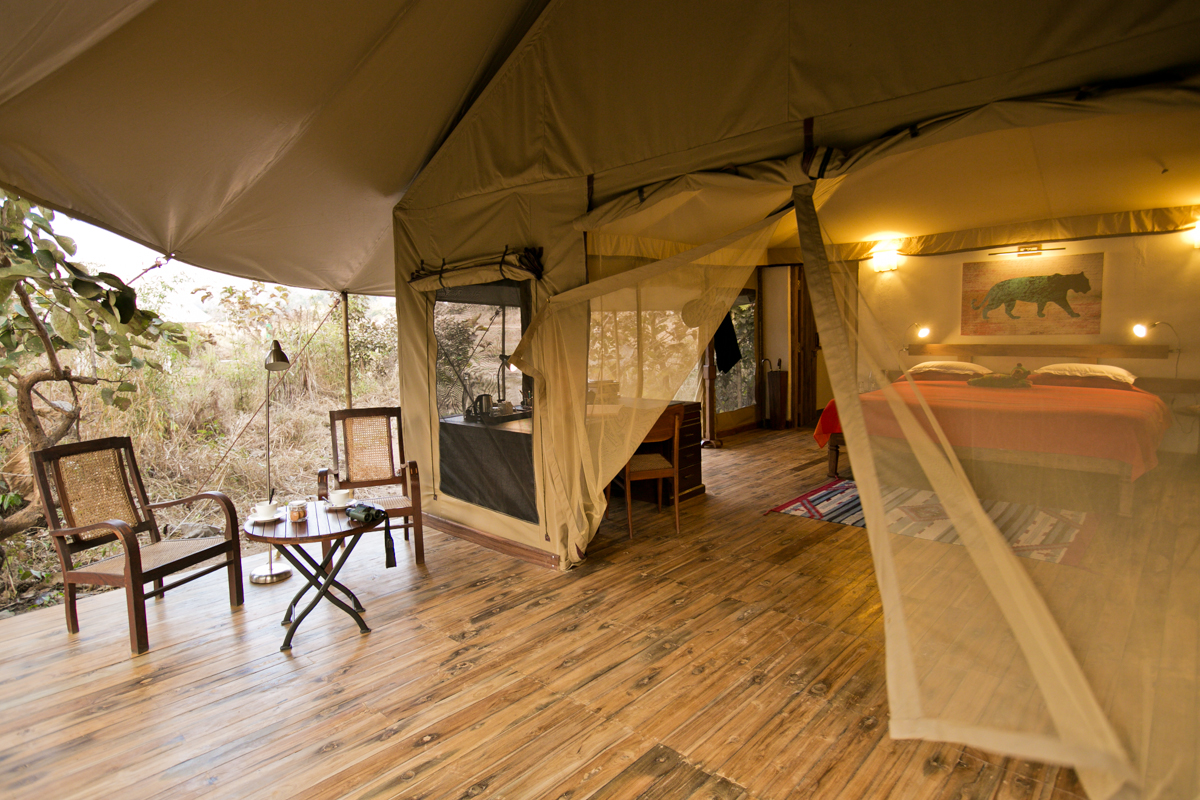
Luxury tent at Jamtara Wilderness Camp, Pench.
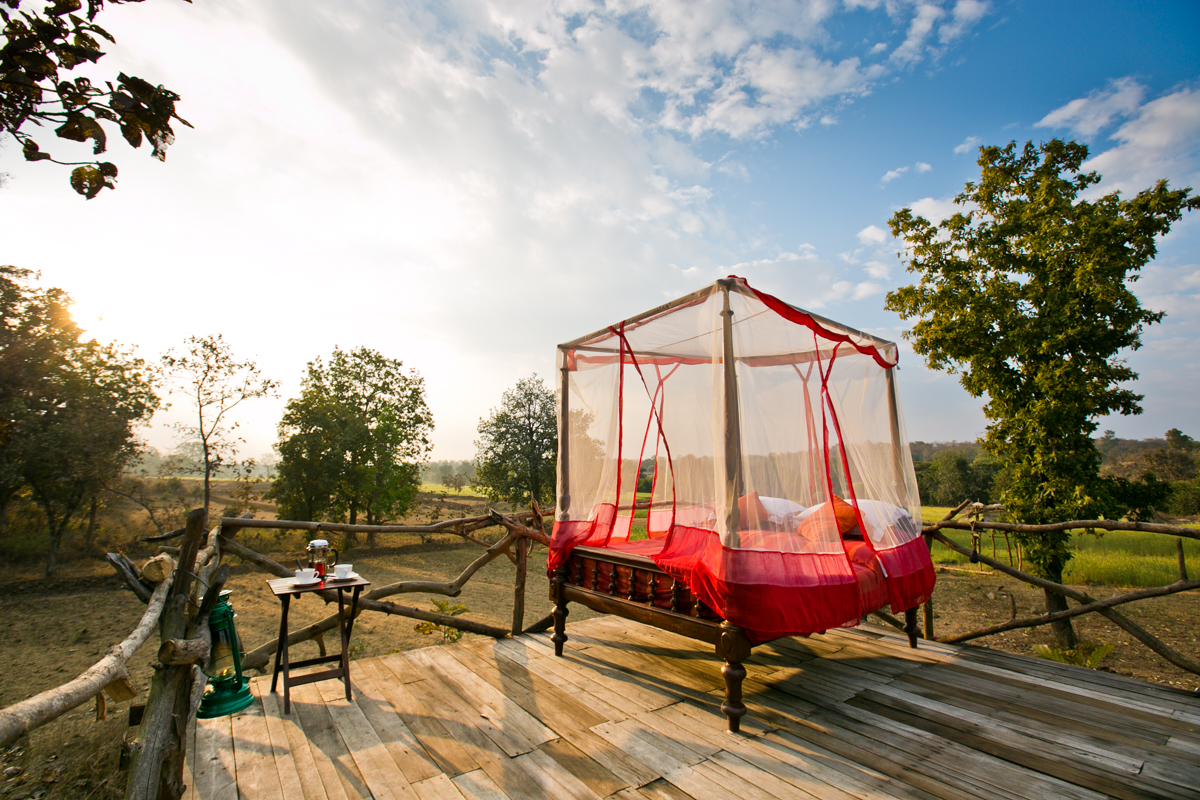
Star bed at Jamtara Wilderness Camp, Pench.
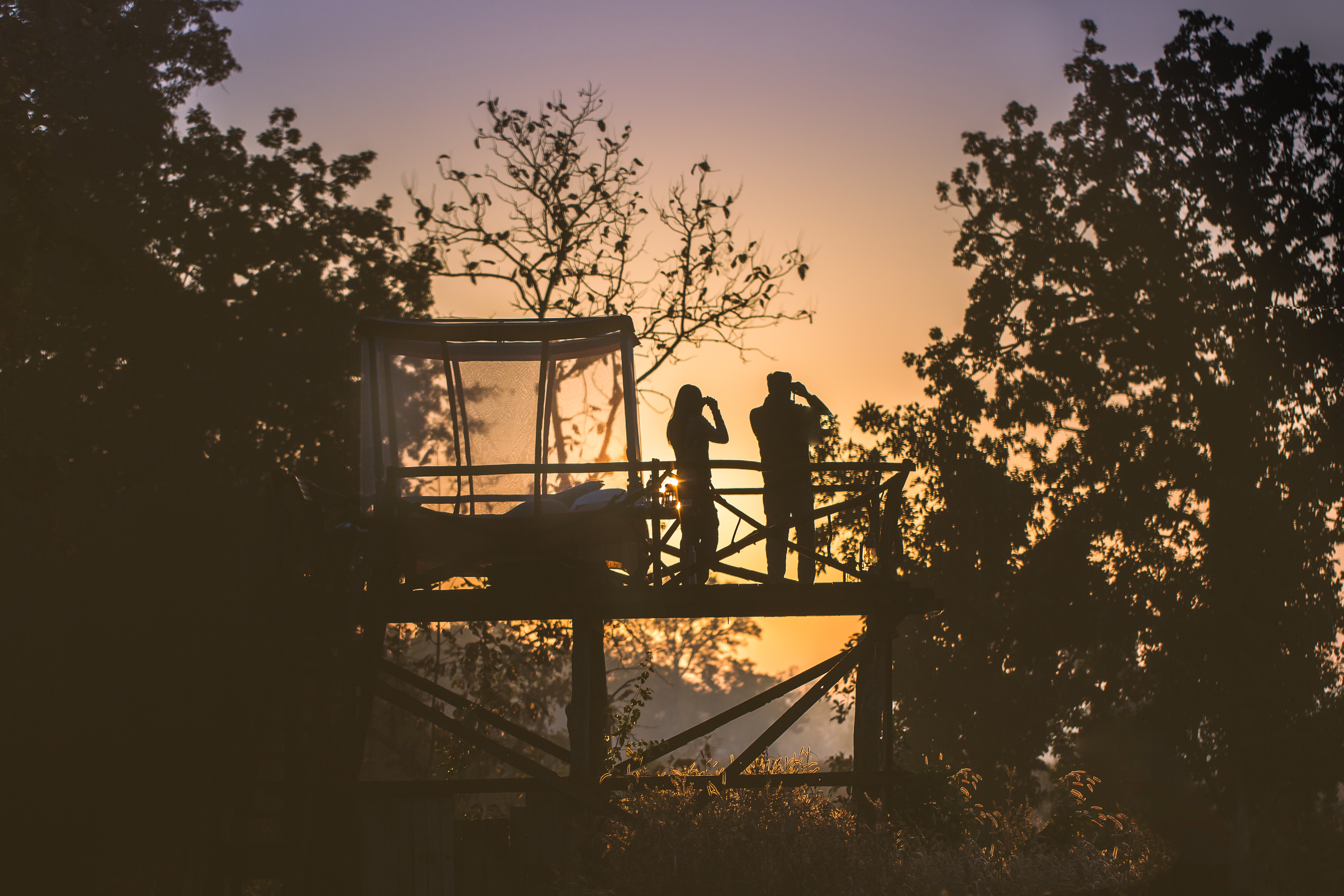
Star bed at Jamtara Wilderness Camp, Pench.
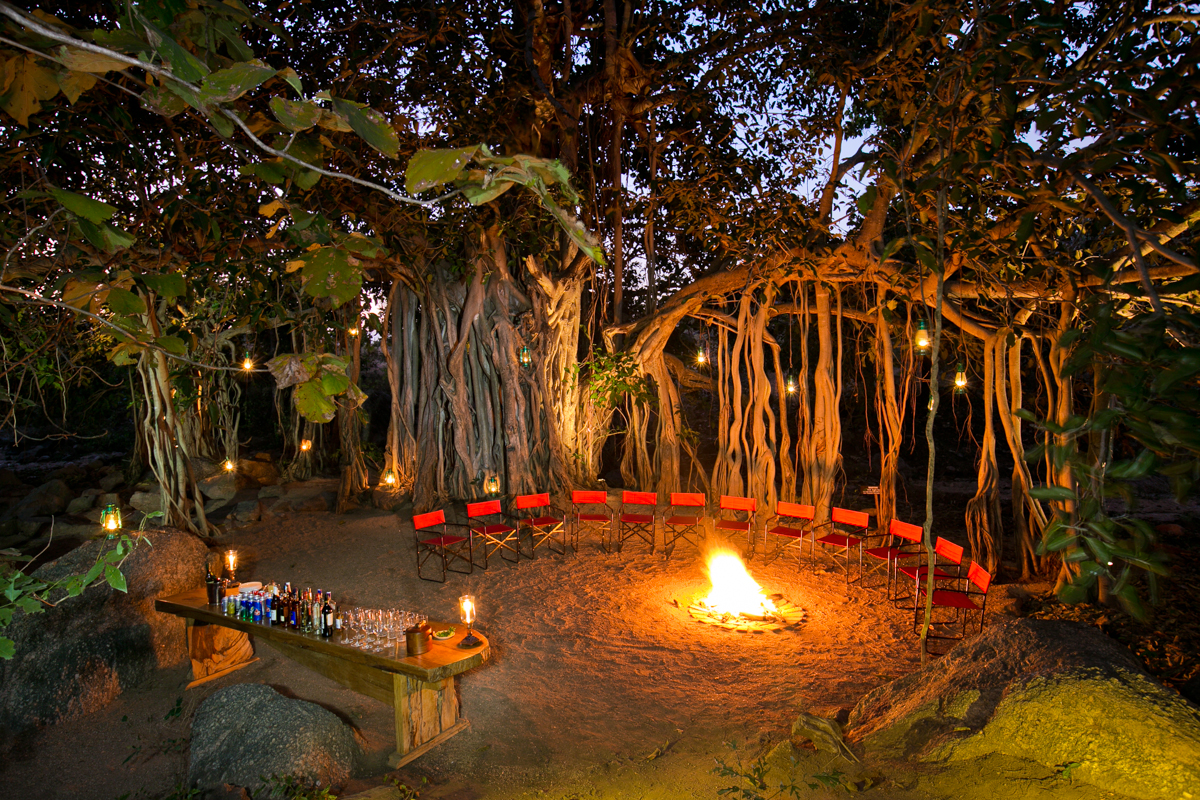
Drinks under the banyan tree at Jamtara Wilderness Camp, Pench.
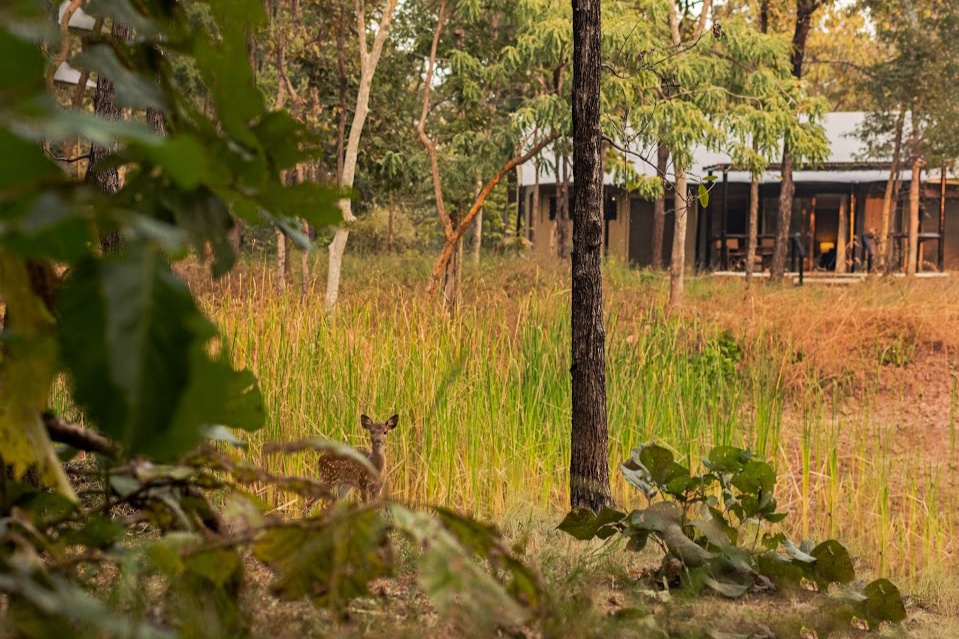
Cottage at Reni Pani Jungle Lodge, Satpura.
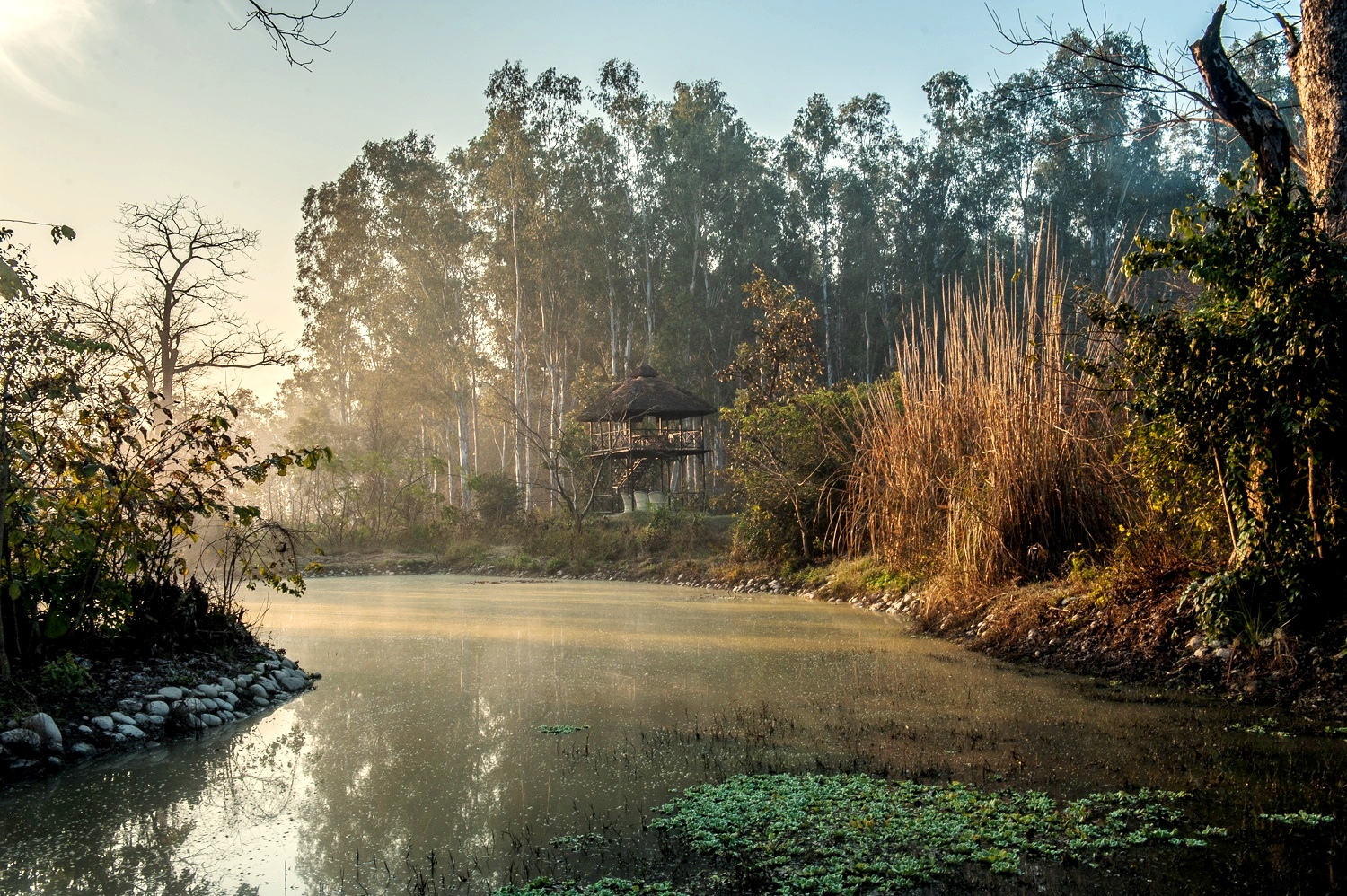
Waterbody and machaan at Jim’s Jungle Retreat, Corbett.
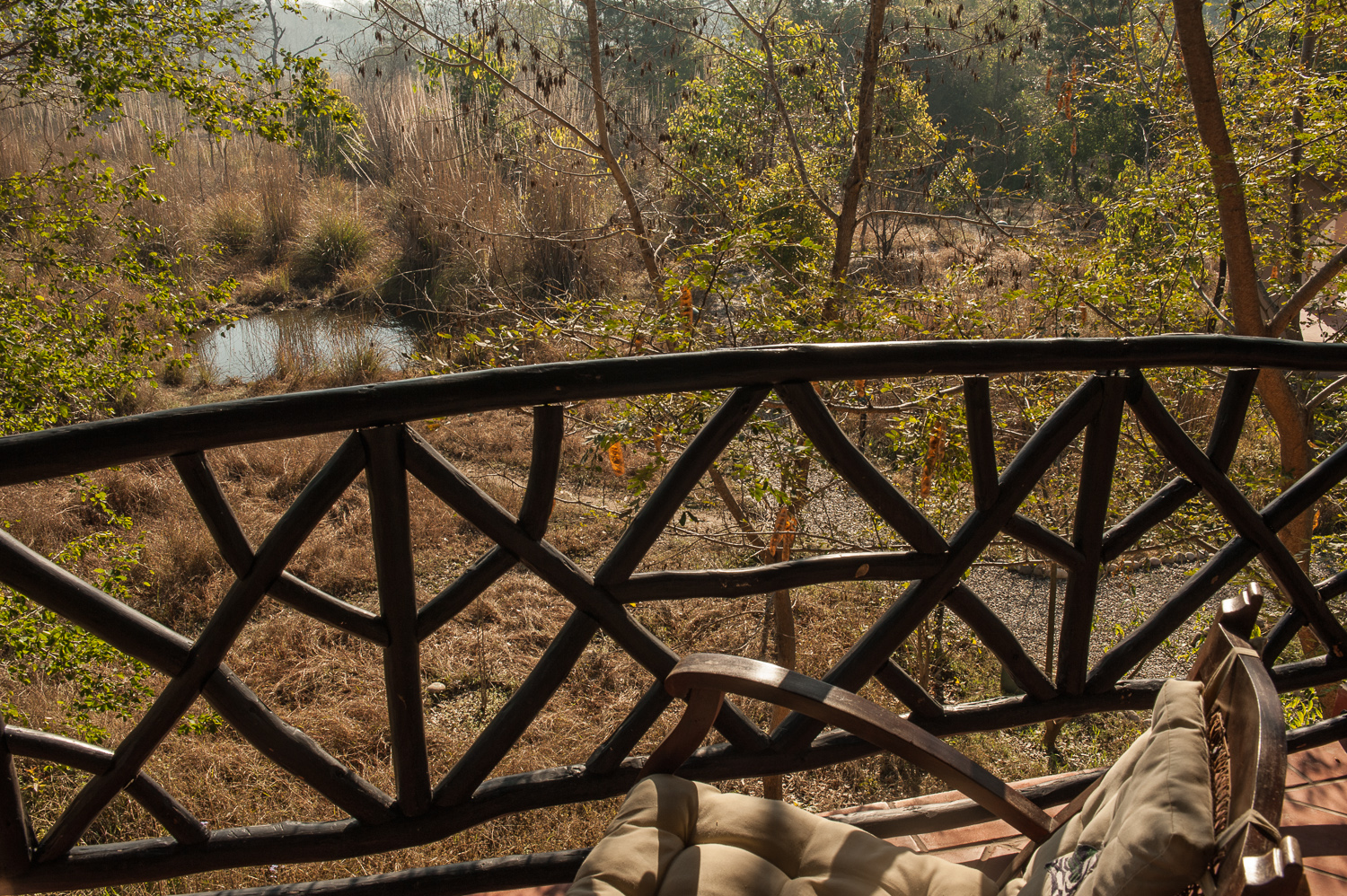
View from Jungle Lodge accommodations at Jim’s Jungle Retreat, Corbett.
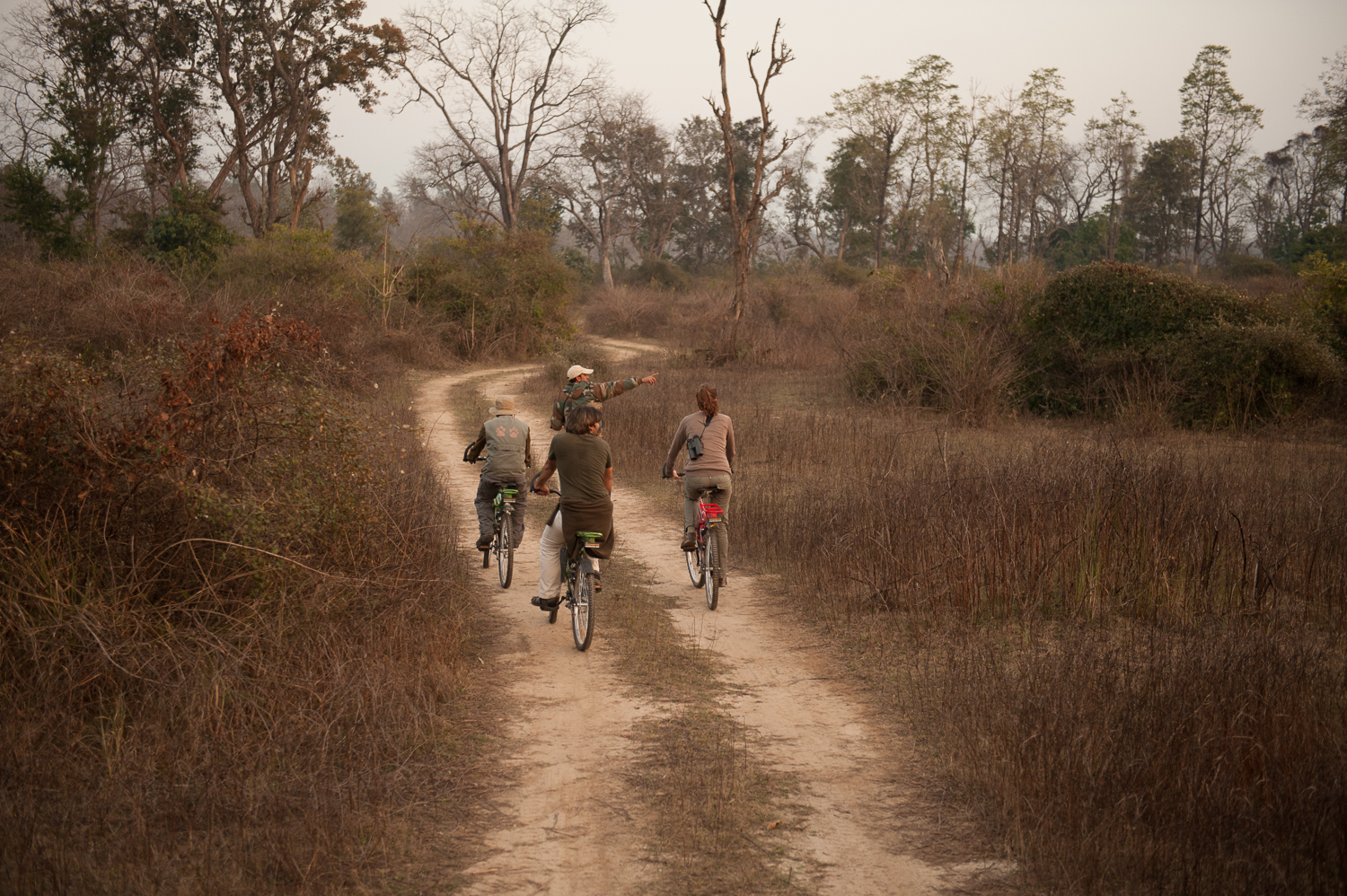
Cycling at Jim’s Jungle Retreat, Corbett.
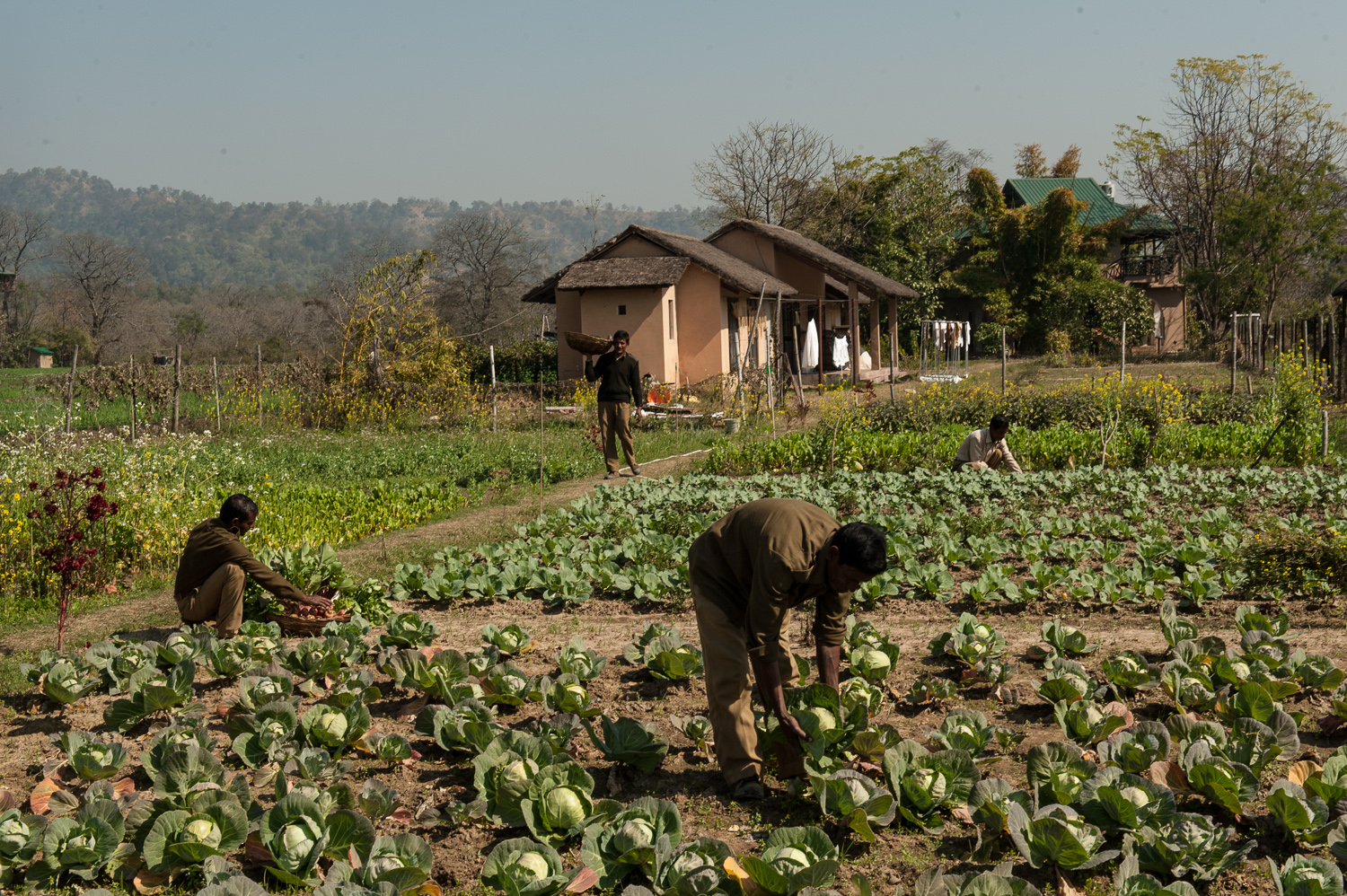
Organic farm at Jim’s Jungle Retreat, Corbett.
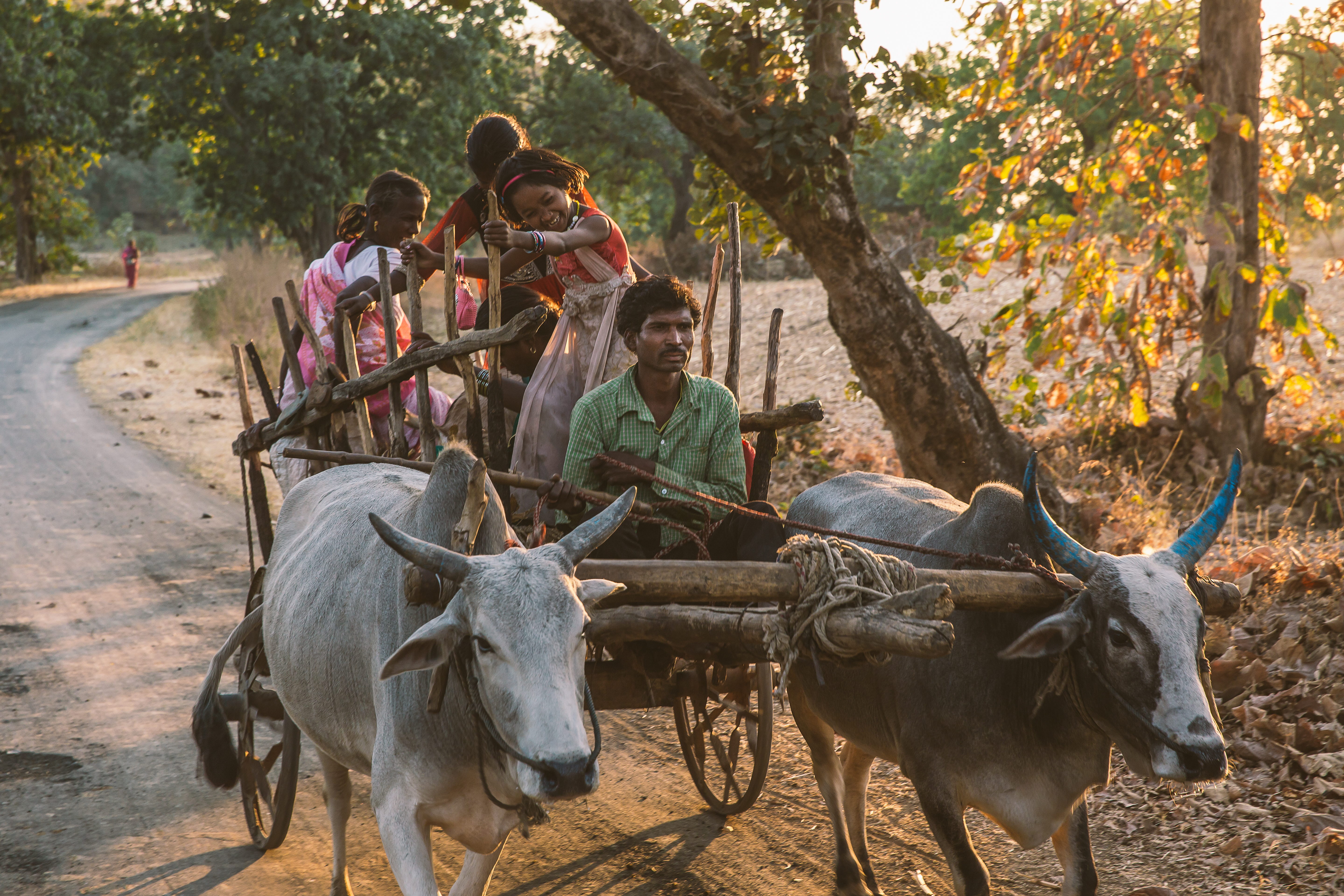
Village life near Jamtara Wilderness Camp, Pench.

Thank you for this, Sharell, really enjoyed reading it!
Emotional connection to the natural world is increasingly rare in industrial culture. And we can’t defend the natural world if we don’t love it. Being able to “be with” the land even via a patio garden or a backyard helps! The land is alive – nature speaks abundantly if only we will listen.
I was very fortunate to grow up a few houses away from the border of national forest, and spent many hours adventuring in the woods. The forest was my first meditation school – as it was for all ancient peoples, when the world’s land was heavily forested with ancient trees.
If I ever find myself wealthy enough to travel in India – I would certainly love to experience the timeless India of these nature preserve sites!!! May the living land be listened to, and protected.
So glad we think and feel alike! 😀
“If they don’t see a tiger, they’ll say they’ve seen nothing“
So true.
Those were absolutely stunning images and a real treat to watch , great job sharell, hope I will get to see more beautiful places like this in future also. Thanks for taking us to them